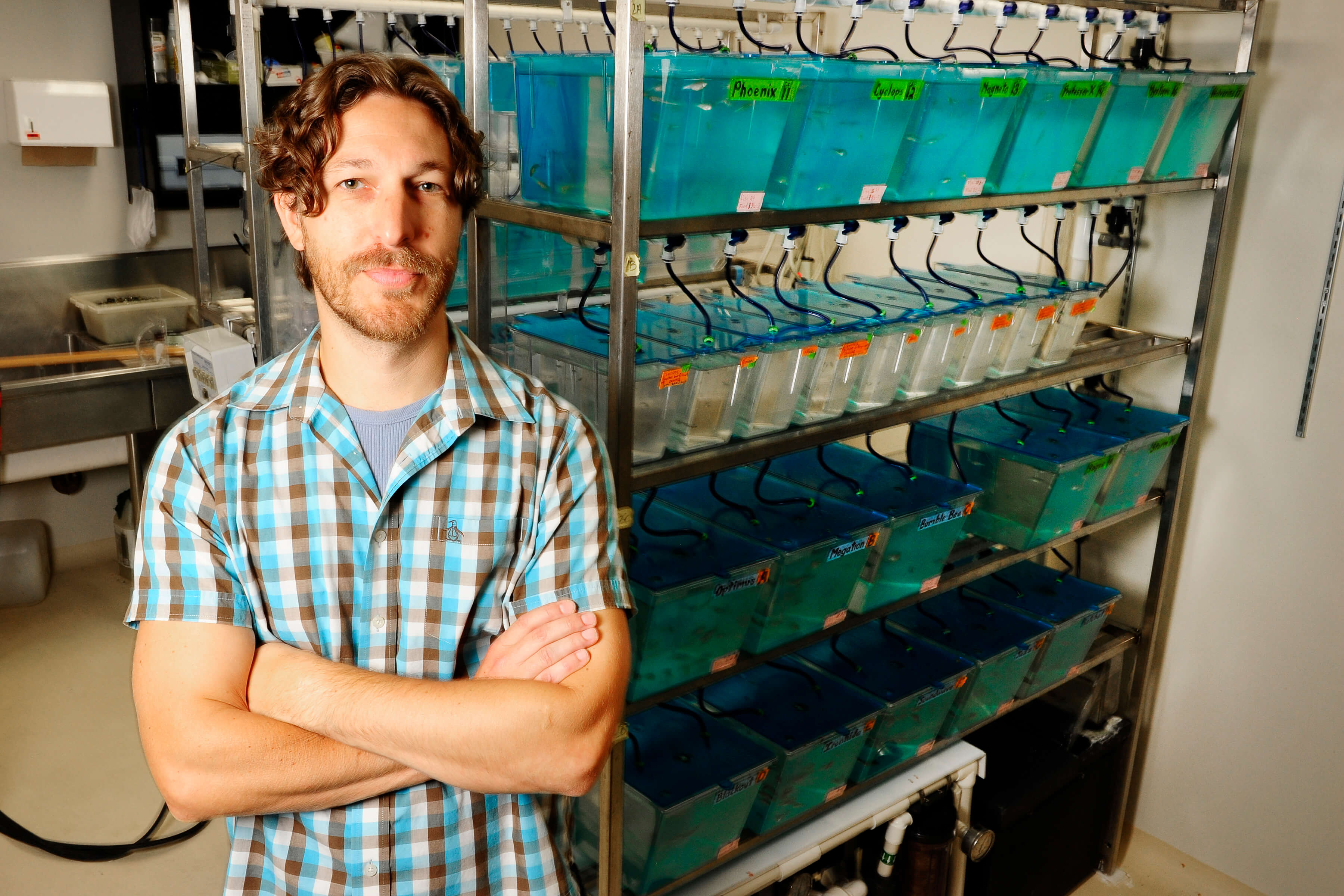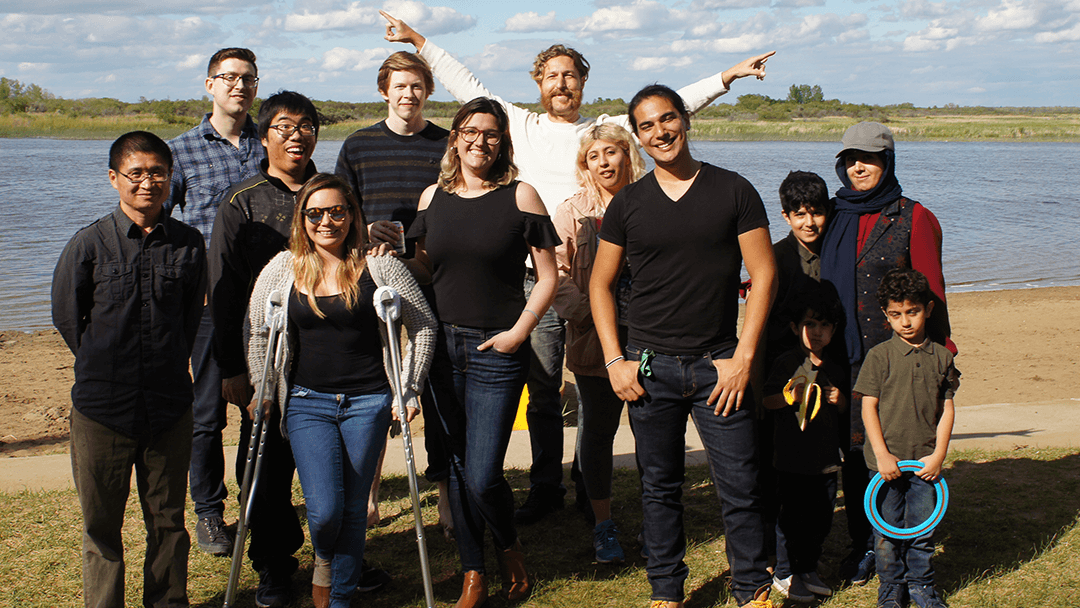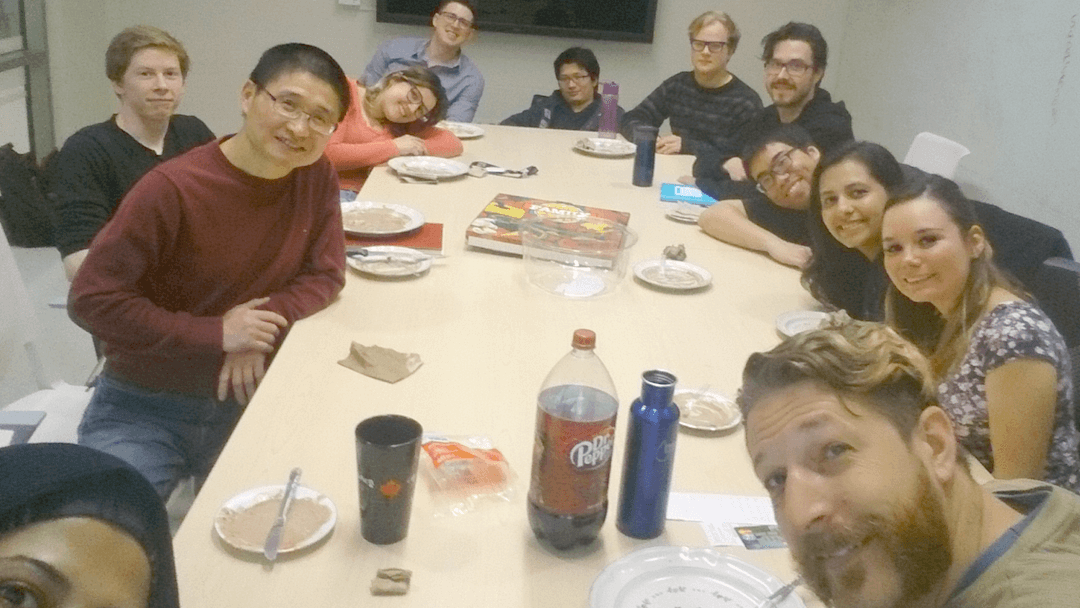Health Relevance
MOLECULAR AND CELLULAR APPROACHES TO DETECT AND TREAT OSTEOARTHRITIS
Osteoarthritis is a major obstacle to work productivity and quality of life for many Canadians, affecting over 10% of the general population, with the elderly increasingly afflicted (~50% of Canadians over 60 years old). In osteoarthritis, cartilage breaks down at the interacting surfaces of bones (i.e., joints), and its absence causes pain and immobility. The research program on osteoarthritis in the Eames lab has many complementary components. To help prevent painful symptoms of osteoarthritis, our research aims to diagnose it at earlier stages, prior to the onset of severe tissue loss. Using novel genetic and imaging techniques, we hope to to facilitate early diagnosis by revealing the molecular and genetic basis for osteoarthritis. Other projects in the Eames lab utilize tissue engineering to provide therapeutic treatment for osteoarthritic tissues that are diagnosed in the late stages of disease progression.

I. Proteoglycan loss alone causes a broad spectrum of OA pathology
By revealing the molecular genetic basis of osteoarthritis, we can design new genetic and molecular diagnostics for early detection. At the cellular and molecular level, osteoarthritis involves three main defects: 1) degradation of sugar-coated proteins (proteoglycans) in joint cartilage, 2) changes to gene expression in the cells (chondrocytes) that maintain joint cartilage, and 3) extra bone formation in adjacent regions. The Eames lab uses unique genetic and imaging tools to test the hypothesis that cartilage proteoglycan degradation actually causes changes to chondrocyte gene expression and adjacent bone formation.
For over 15 years, our vertebrate cousin, the zebrafish, has been a widely-accepted research model of human development and disease. The Eames lab has zebrafish with unique mutations in cartilage proteoglycan production. These fish showed that loss of proteoglycans itself causes changes to chondrocyte gene expression and adjacent bone formation. This novel experimental system provides a fresh, unexplored avenue for understanding and eventually treating osteoarthritis. Specifically, we study the molecular mechanism by which proteoglycans change chondrocyte gene expression, hypothesizing that proteoglycans in the cartilage modulate the biological activity of secreted growth factors, which in turn alter chondrocyte gene expression and adjacent bone formation. To test this hypothesis, we use many powerful experimental tools available in zebrafish (e.g., mutants, transgenics, and embryonic injections) to manipulate the proteoglycan levels in cartilage matrix and/or growth factor activity. We measure the effects of proteoglycans and growth factor activity on chondrocyte gene expression using a variety of histological and molecular assays.
II. Chemical-specific imaging as a readout of proteoglycan function
In a complementary line of research to develop early diagnostics for osteoarthritis, the Eames lab uses novel imaging techniques being developed at the University of Saskatchewan to assay the importance of specific chemical elements in proteoglycan function. Using the Canadian Light Source synchrotron on campus here, we produce images with high spatial resolution that reflect the exact molecular composition of cartilage tissue samples. Our unique imaging methods reveal spatial patterns of specific chemicals in normal, intact cartilage matrix and also the variety of changes that may occur in proteoglycan-deficient cartilage matrix of zebrafish mutants. By associating specific chemical elements with the structural integrity of cartilage, these experiments may lead to novel imaging methods for diagnosing osteoarthritis in the clinic.
III. Tissue engineering of articular cartilage
Since most cases of osteoarthritis in the clinics are diagnosed after severe cartilage loss has occurred in skeletal joints of patients, a promising therapy of the future involves tissue engineering of cartilage. The use of biodegradable scaffolds embedded with cells shows promise for articular cartilage repair. The Tissue Engineering Research Group, led by Dr. Daniel Chen, believe significant advances in cartilage replacement therapy for osteoarthritis patients can be made by engineering scaffolds with carefully controlled microstructure and arrangements of cells, tailored to mimic the organization of native articular cartilage. To this end, we are developing novel methods to advance the theoretical and practical basis of producing biodegradable scaffolds for cartilage replacement in osteoarthritis patients. We are testing these advanced scaffolds for their ability to promote cartilage regeneration in culture dishes, then in small animal models, such as the miniature pig.
Grants
Year | Amount | Agency | Award | Title |
2022-2023 | 150,000 | Natural Sciences and Engineering Research Council (NSERC) | Research Tools and Instruments (RTI) (1 of 6 Co-Applicants) | High Efficiency X-ray Macroscope for Biomedical Imaging at the Canadian Light Source Synchrotron |
2020-2021 | 150,000 | Natural Sciences and Engineering Research Council (NSERC) | Research Tools and Instruments (RTI) (1 of 8 Co-Applicants) | A cutting-edge mechanical simulation bioreactor for tissue engineering |
2019-2024 | 180,000 | Natural Sciences and Engineering Research Council (NSERC) | Discovery Grant (Sole Investigator) | Evolution of skeletal cell transcriptomes |
2018-2019 | 150,000 | Natural Sciences and Engineering Research Council (NSERC) | Research Tools and Instruments (RTI) (1 of 5 Co-Applicants) | A cutting-edge printer for bio-fabricating tissue scaffolds |
2018-2019 | 8,000 | LabEX CeMEB (France) | Invited Scientist Grant (Sole Investigator) | Collaboration with Melanie Debiais-Thibaud (Univ. Montpellier) |
2018-2019 | 34,000 | UofS CoM OVDR | Research Cluster Funding (Principal of 13 Co-Applicants) | Imaging and Development cluster |
2018-2019 | 5,000 | UofS Office Vice President Research | Sabbatical Leave Grant (Sole Investigator) | Travel for sabbatical collaborations |
2018-2019 | 5,000 | UofS Office Vice President Research | Global Ambassador (Outgoing)—(Sole Investigator) | Travel for sabbatical collaborations |
2018-2020 | 100,000 | University of Saskatchewan College of Medicine | CoMBRIDGE operating grant (Principal of 4 Co-Applicants) | Establishing a pig model for cartilage tissue engineering |
2018-2019 | 50,000 | Saskatchewan Health Research Foundation (SHRF) | Collaborative Innovation Development Grant (1 of 6 Co-Applicants) | Synchrotron imaging-based non-invasive studies on 3D printed scaffolds for bone repair |
2018-2019 | 41,000 | Natural Sciences and Engineering Research Council (NSERC) | Discovery Grant Extension (Sole Investigator) | Evolution of skeletal cell transcriptomes |
2017-2018 | 102,000 | Canada Council for the Arts (CCA) | Explore and Create (New Media Arts)—(1 of 2 Co-Applicants) | All forms at all times |
2016-2024 | 753,035 | Canadian Institutes of Health Research (CIHR) | Operating Grant (Sole Investigator) | Mechanisms and effects of proteoglycan-dependent signalling in skeletal tissues |
2016 | 50,200 | Canada Council for the Arts (CCA) | New Media and Audio Artists: Research and Production Grant—(1 of 2 Co-Applicants) | Morphogenesis: Collaborative art-science laboratory residency and evolutionary science project culminating in immersive digital art exhibition |
2015-2016 | 100,000 | Canadian Institutes of Health Research (CIHR) | Operating Grant; Bridge funding: New Investigator, Musculoskeletal, Skin, and Oral Health—(Principal of 2 Co-Applicants) | Zonal articular cartilage tissue engineering |
2015 | 1,259,321 | Canada Foundation for Innovation (CFI) | John R. Evans Leaders Fund—(1 of 2 Co-Applicants) | High-throughput molecular imaging platform |
2014 | 61,736 | Natural Sciences and Engineering Research Council (NSERC) | Research Tools and Instruments (RTI)—(1 of 3 Co-Applicants) | X-ray tube replacement for micro-CT imaging of musculoskeletal development and adaptation |
2014-2019 | 300,000 | Canadian Institutes of Health Research (CIHR)—RPP SK | New Investigator Salary Award (Sole Investigator) | Deciphering the functional role of proteoglycans in the etiology of osteoarthritis |
2013-2018 | 205,000 | Natural Sciences and Engineering Research Council (NSERC) | Discovery Grant (Sole Investigator) | Evolution of skeletal cell transcriptomes |
2013-2014 | 25,000 | Royal University Hospital Foundation (RUHF) | RUHF Research Grant (Principal of 5 Co-applicants) | Improved imaging for osteoarthritis |
2013-2016 | 750,000 | Saskatchewan Health Research Foundation (SHRF) | Health Research Group (Phase 3)—(1 of 10 Co-Applicants) | Tissue Engineering Research Group |
2012-2015 | 120,000 | Saskatchewan Health Research Foundation (SHRF) | Establishment Grant (Sole Investigator) | Temporal regulation of skeletal cell differentiation by proteoglycan-dependent growth factor signalling |
2012-2015 | 110,000 | University of Saskatchewan (Provost, College of Medicine, Dept. of Anatomy & Cell Biology) | Start-up | Temporal regulation of skeletal cell differentiation by proteoglycan-dependent growth factor signalling |
![]()
Dept. Anatomy, Physiology, and Pharmacology,
107 Wiggins Rd,
Saskatoon, SK, Canada, S7N 5E5
Office: 2D01.3 HSC, (306)966-6534
Lab: B314 HSC, (306)966-4087
PHOTOS







